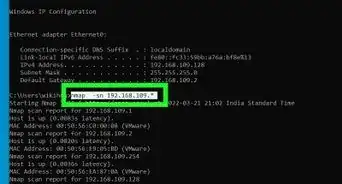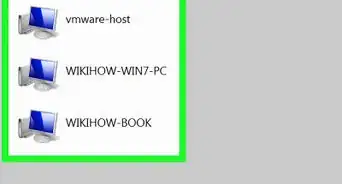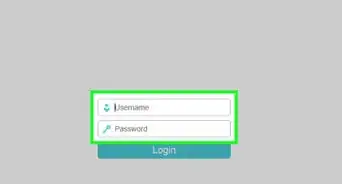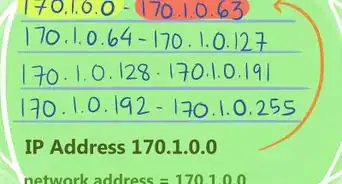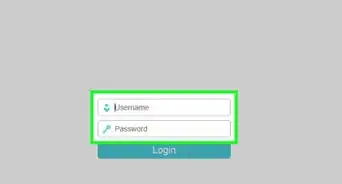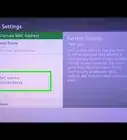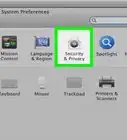This article was co-authored by Stan Kats and by wikiHow staff writer, Janice Tieperman. Stan Kats is the COO and Chief Technologist for The STG IT Consulting Group in West Hollywood, California. Stan provides comprehensive technology & cybersecurity solutions to businesses through managed IT services, and for individuals through his consumer service business, Stan's Tech Garage. Stan has over 7 years of cybersecurity experience, holding senior positions in information security at General Motors, AIG, and Aramark over his career. Stan received a BA in International Relations from The University of Southern California.
There are 12 references cited in this article, which can be found at the bottom of the page.
This article has been viewed 17,011 times.
Careers in computer networking can make you a lot of money, but it can be difficult to get your foot in the door of the industry. Having a Cisco Certified Network Associate (CCNA) certificate helps to display your knowledge of computer networks on a professional level. You can be well on your way to receiving your CCNA certification by gaining the proper experience, taking the CCNA exam, and working to advance your career.
Steps
Getting Experience in Computer Networking
-
1Get a degree in computer science or information technology to serve as your foundation. Obtain a bachelor’s degree in a field that focuses on computer networking, or in a program that teaches you the basics of how computer networks operate. While you don’t need an undergraduate degree to get your CCNA certificate, having an academic background can help you during both the testing process and when you fill out future job applications.[1]
- To find schools with good computer science programs, look here: https://www.collegechoice.net/rankings/best-computer-science-degree.
-
2Apply for a job in the computer networking field to gain practical experience. Search for positions within the technology field so you can get on-the-job experience with computer networking. Hardware engineers, network administrators, computer technical support specialists, and information technology managers are all great jobs to look into.[2] Try and find jobs online by using job search engines like Indeed, Glassdoor, and Monster or by checking government websites for job openings.[3]
- Most careers in the networking field make at least $45,000 annually.
- Internships and entry-level jobs are great ways to get hands-on experience.
Advertisement -
3Take the ICND1 exam to receive your CCENT certificate. The Cisco certification system offers a lower level of certification known as the Cisco Certified Entry Networking Technician (CCENT), which demonstrates your understanding of basic computer networking skills like routing technologies and infrastructure maintenance. You can get this certificate by completing the Interconnecting Cisco Networking Devices Part 1 (ICND1) exam.[4] While this certification isn’t required, it may be useful to people who don’t have any practical computer networking experience.[5]
- This option is only available up until February 23, 2020. After that, Cisco is switching to a new system where CCNA will be the lowest level of certification.
Taking the CCNA Exam
-
1Enroll in a study school to prepare for the exam. Many online schools have training programs to prepare you for the CCNA exam. Online classes are useful since they include videos and other resources tailored specifically to the CCNA test. These classes are led by professionals who understand the materials and want to help you succeed. While the total test preparation time varies per person, online classes are the most streamlined and efficient way to prepare.[6]
- Use free online study resources to get started.
-
2Study for the exam with practice tests. Use practice tests to quiz yourself on the necessary skills for the CCNA exam. Depending on the field you pursue (i.e, routing and switching, collaboration, security, etc.), you can be tested on routing and switching, security, data centers, service providers, voice operations, and wireless operations. If you’re taking the general CCNA exam, practice for specific topics that you feel less comfortable with. You can take some practice tests here: http://www.practicetestbank.com/ccna/tests.
- There are general and specific CCNA certification tests. Know which tests are required for potential career paths by checking here: https://www.cisco.com/c/dam/en_us/training-events/certifications/career-path.pdf.
- Familiarize yourself with physical computer networking equipment before the test. Be certain that you know how routers, layer 2 and 3 switches, power cables, console cables, Ethernet cables, crossover cables, and other types of equipment work.[7]
-
3Register online to take the CCNA exam. Go online and register for the CCNA exam via the Pearson VUE website. Since the tests are only offered at specific exam centers, schedule your test at the location closest to you. If you want to pursue a career in a particular category, like routing and switching or collaboration, you can enroll for a CCNA exam in those specific fields.[8]
- As of July 2019, the exam costs $295 to take.
- You can register for the test up to six weeks ahead of time.[9]
-
4Complete and pass the test. Go to your testing location and finish the exam. The test itself will have 50-60 questions, and you’ll have an hour and a half to finish. You generally need to receive an 85% or higher score to pass the test.
Advancing Your Career
-
1Update your resume or CV to include your new certification. Add your CCNA certification to your active resume or CV. If you don’t have a certifications section, be sure to add one. This helps potential employers to know your qualifications on a technical level.[10]
- You can add a CCNA certification to your resume like this: "Cisco Certified Network Associate (CCNA)," followed by the year you received the certification (i.e, 2019).
-
2Decide if you want to get more advanced certifications. Cisco offers more certification options depending on what your interests are. If you want to rise to the level of Cisco Certified Network Professional (CCNP) or Cisco Certified Network Expert (CCIE) in fields like security, collaboration, and wireless operations, continue studying and preparing for future certification tests.[11]
-
3Apply for advanced positions in the networking field. Start submitting your resume to networking jobs that require higher qualifications, like a software developer or IT manager. The more qualifications you have, the higher potential salary you can receive.[14]
References
- ↑ https://www.summitir.com/2016/12/28/how-to-become-a-cisco-certified-network-associate-ccna/
- ↑ https://thebestschools.org/careers/career-guide/best-information-technology-jobs/
- ↑ https://money.usnews.com/money/blogs/outside-voices-careers/articles/best-job-search-sites
- ↑ https://www.cisco.com/c/en/us/training-events/training-certifications/certifications/entry/ccent.html#~stickynav=1
- ↑ https://resources.infosecinstitute.com/category/certifications-training/ccna/ccna-requirements/
- ↑ https://www.computertrainingschools.com/cisco-certifications/ccna/
- ↑ https://www.summitir.com/2016/12/28/how-to-become-a-cisco-certified-network-associate-ccna/
- ↑ https://www.summitir.com/2016/12/28/how-to-become-a-cisco-certified-network-associate-ccna/
- ↑ https://www.cisco.com/c/en/us/training-events/training-certifications/exams/registration.html
- ↑ https://zety.com/blog/certifications-on-resume
- ↑ https://www.cisco.com/c/dam/en_us/training-events/certifications/career-path.pdf
- ↑ https://www.businessnewsdaily.com/10704-networking-certifications.html
- ↑ https://www.cisco.com/c/en_ca/training-events/career-certifications/learning-about-recertification.html
- ↑ https://money.usnews.com/careers/best-jobs/rankings/best-technology-jobs








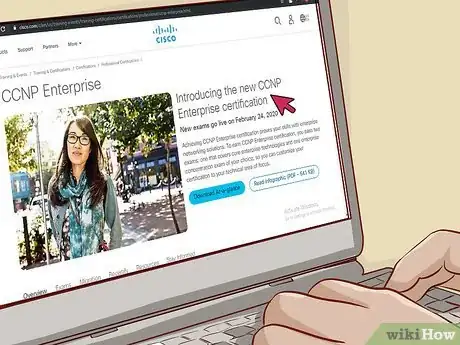



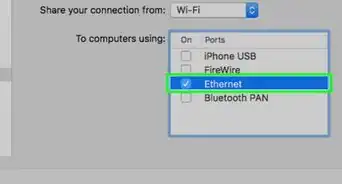
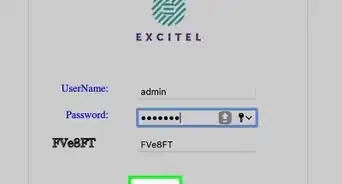
-Step-26-Version-2.webp)
